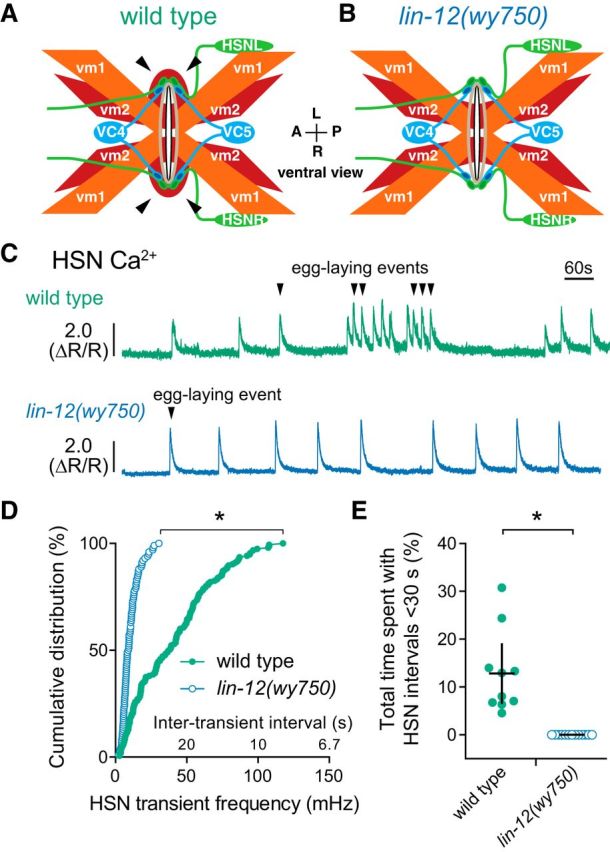Figure 9.

The vm2 muscle arms are required for vulval muscle feedback to HSN and burst firing. A, B, Diagram of egg-laying circuit structure (ventral view) in wild-type (A) and lin-12(wy750) mutant (B) animals missing lateral vm2 muscle arms (arrowheads). C, Representative traces showing HSN Ca2+ activity in wild-type (green) and lin-12(wy750) mutant animals (blue). Arrowheads indicate egg-laying events. D, Cumulative distribution plots of instantaneous Ca2+ transient peak frequencies (and intertransient intervals) in wild-type (green circles) and lin-12(wy750) mutants (blue circles). *p < 0.0001, Mann–Whitney test. E, Scatter plots showing fraction of time spent by each individual with frequent HSN Ca2+ transients characteristic of the egg-laying active state (<30 s) in wild-type (filled green circles) and lin-12(wy750) mutant animals (open blue circles). Error bars indicate 95% confidence intervals for the mean. *p = 0.0011, Student's t test.
